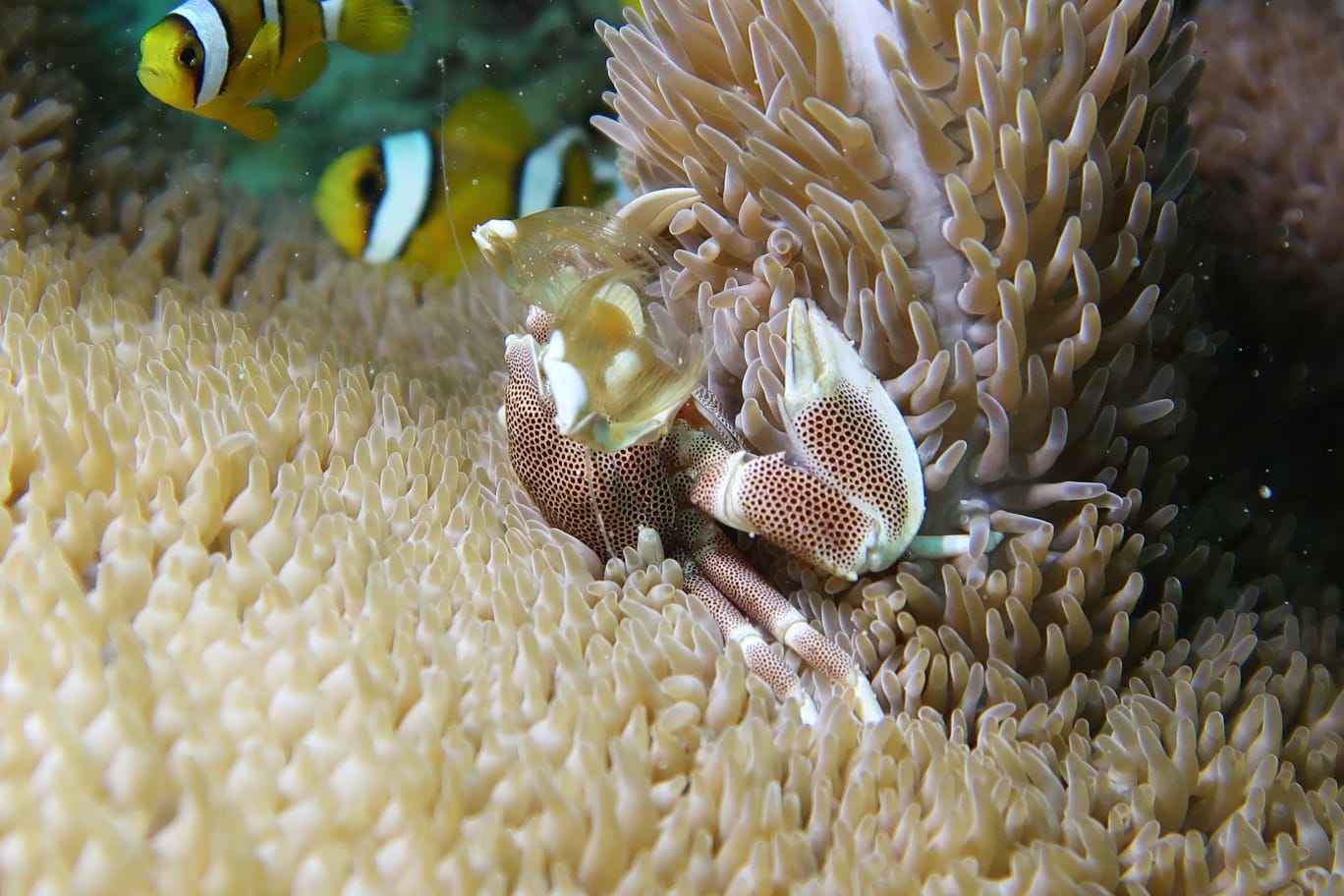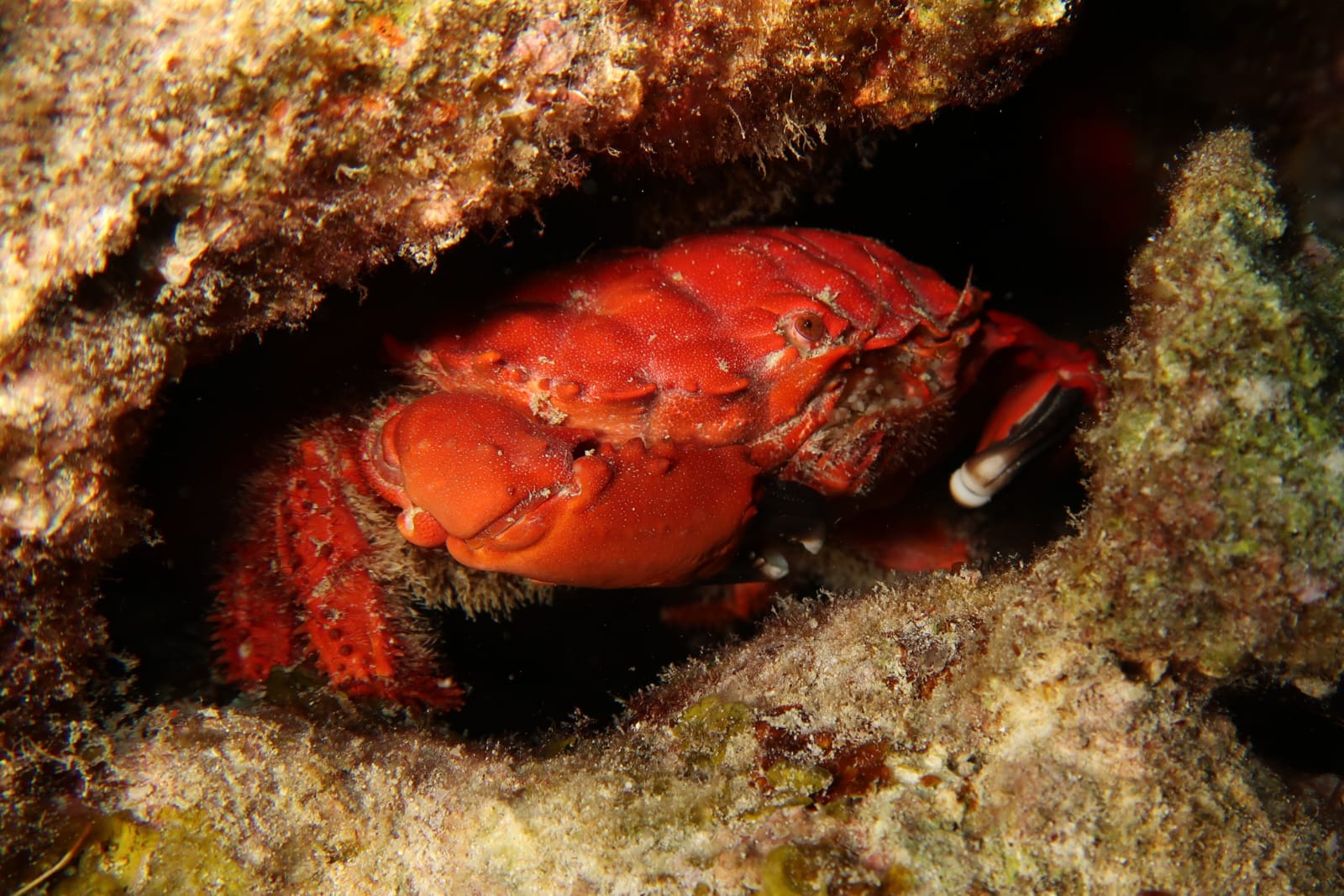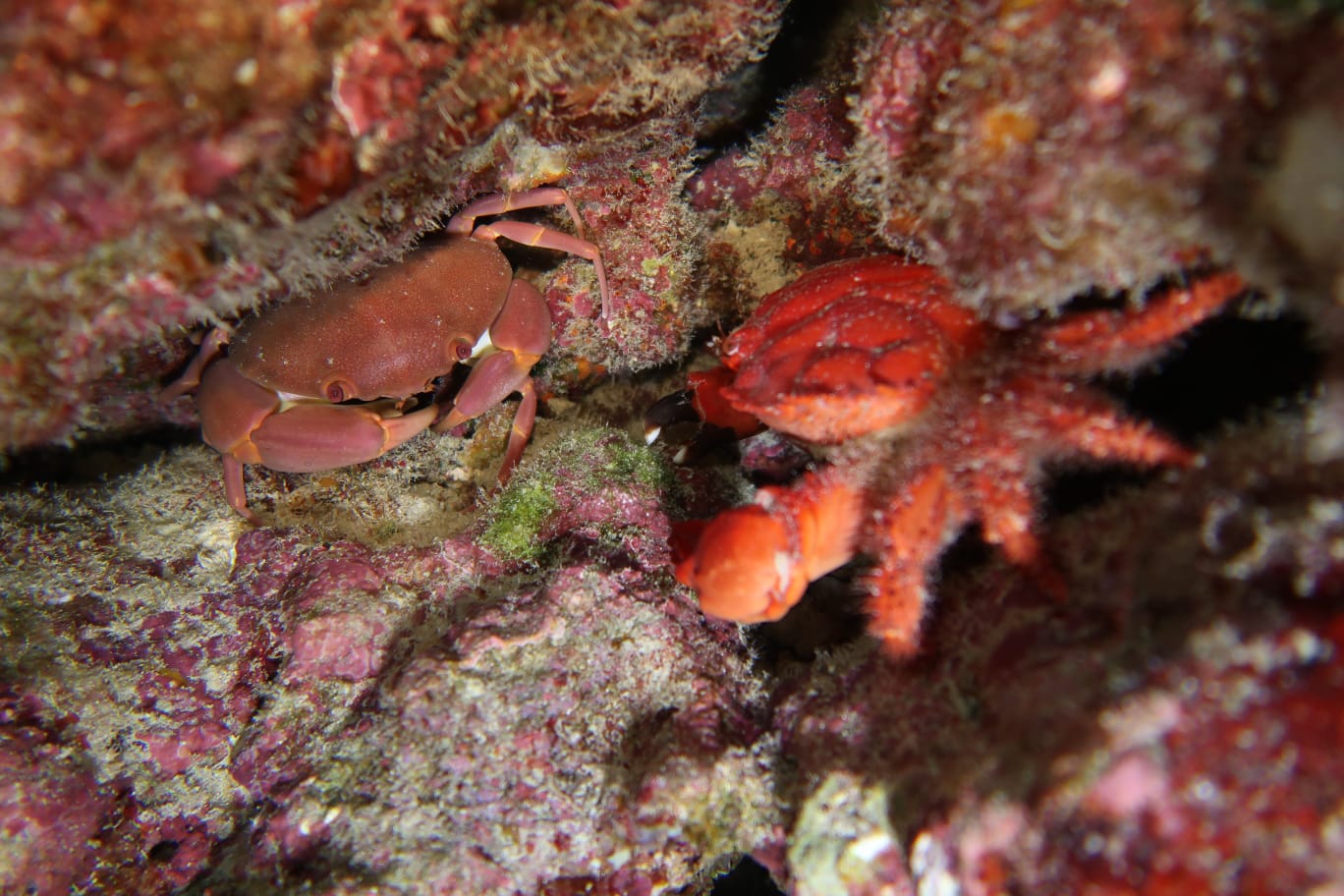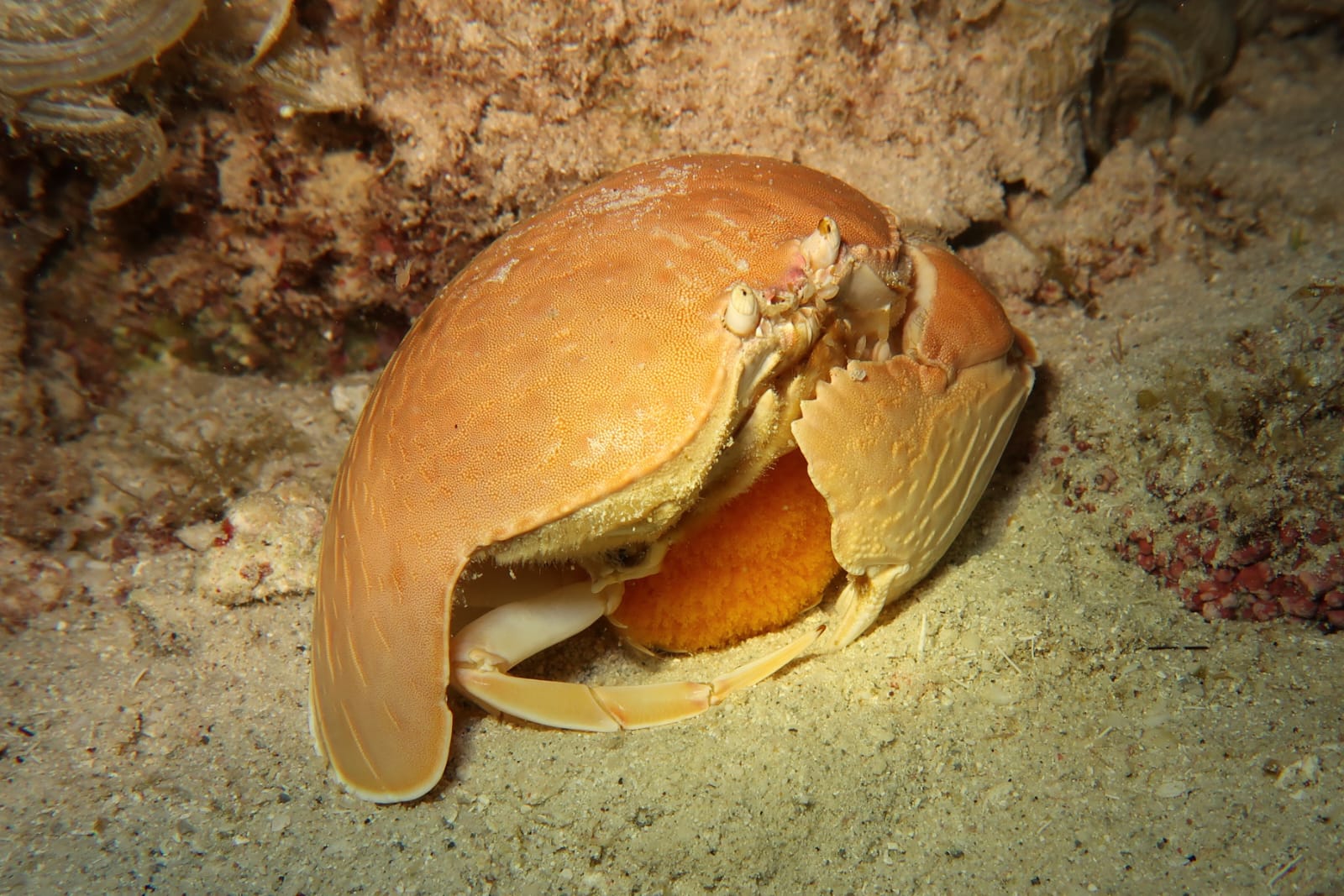Blog
The different crabs from Mauritius
- by Cindy
-
in Blog
-
Hits: 1956
The extraordinary family of crabs, and the existing ones in Mauritius
How many different species of crabs are there? How many did we observe in Mauritius? At which depth do they live? Are they going out by day or by night? We hope you’ll find a few answers in our article below :-)
Description
The Crabs belong to the “crustaceans”. There are about 6 800 different species in total. They have a more or less hard carapace made from calcium carbonate. They have eight legs used to move and two claws in the front used for hunting or defense, more or less large depending on the species, two eyes and a shell. Most of the crabs are aquatic but some of them are terrestrial. In Mauritius, more than 23 different species have been found, on earth and underwater.
what about the species living in mauritius?
To start with an easy one to spot for you as a beginner diver would be the “spotted porcelain crab”. We can usually find it in anemones, sponges or corals and their size is between 3 and 7 cm. They can be spotted between 5m depth to 20m depth. Very often seen on our dive site Ti Koraye.

Another crab that can be spotted mostly by night is the “splendid pebble crab”, who lives from 1m depth to 30m depth. His size is about 15-20cm and with its red carapace, red eyes, and large teeth it’s easily recognizable. If you know what to search you might be able to see it at Merville Patches.

Now, we just wanted to show you the “marbled stone crab” which can measure 6 to 10 cm, and lives until 95m depth. This specie is still very little known, it has not been studied a lot and still has a lot to tell us.

Finally, I wanted to show you the amazing “Calappa calappa” or "smooth box crab". As you can see, with its white eyes out of its orange carapace, its folded claws which fit perfectly under its shell, the kind of comb with teeth on the top of its claws, it looks particular and different from many other ones. It is called “calappa” which comes from “kelapa” the Malay word for “coconut”. It is active at night and when it feels threaten it can burrow beneath the sand.

Comments
- No comments found




Leave your comments